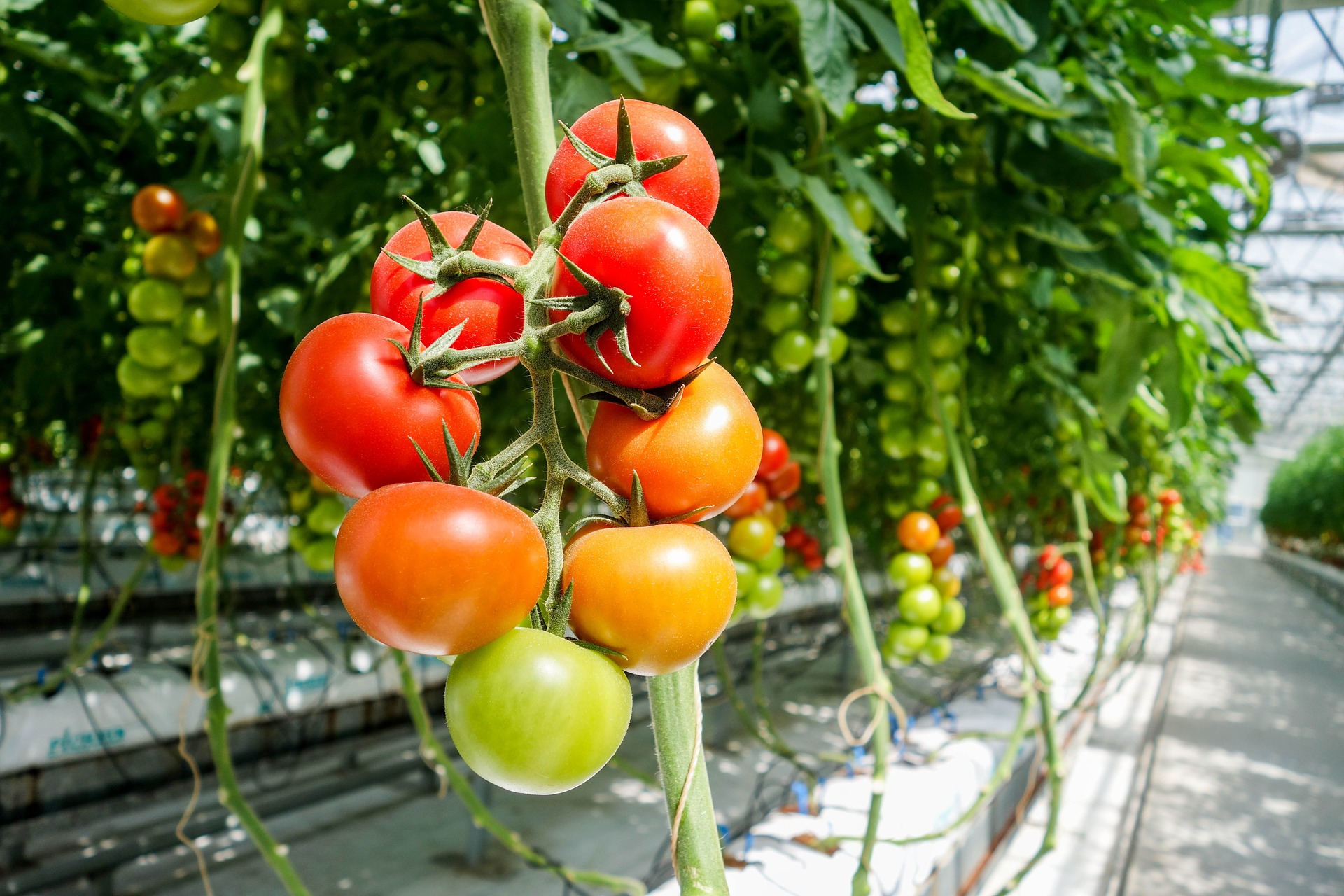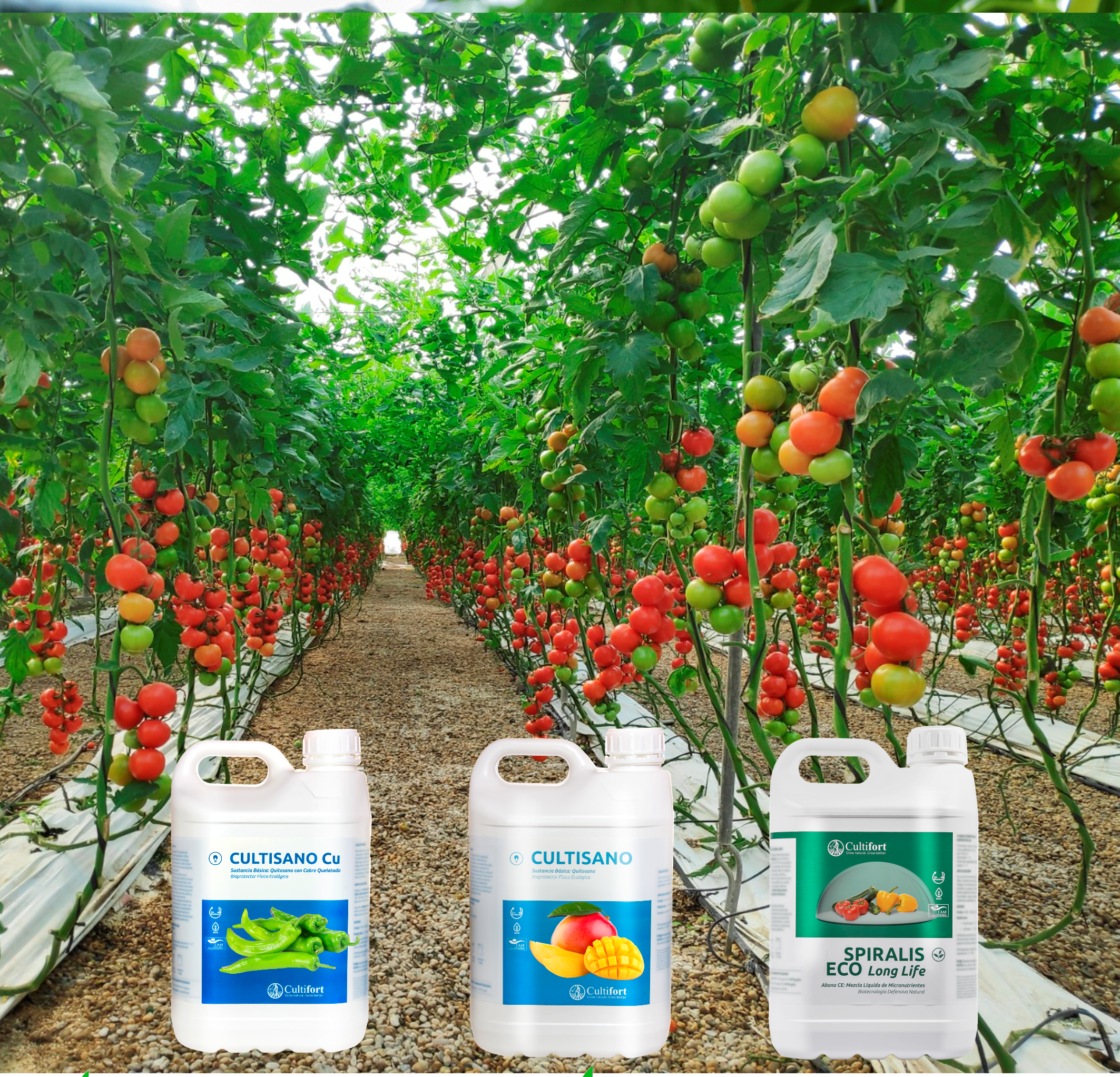Within world horticulture, tomato cultivation is established as one of the main productive alternatives. The tomato is a vegetable that has a high genetic diversity, with countless varieties with different appearance, color and flavor. This fact, together with its dynamism (fresh consumption or industrial processes) and the incorporation of new technologies, make this nightshade adapt to different production systems, among which greenhouse cultivation stands out.
The world demand for tomato is continuously increasing and, with it, its production and marketing. However, this productive increase is due more to a higher yield than to an increase in the cultivated area. These higher yields, in turn, are the product of the incorporation of new cultivation technologies, which allow the management of environmental factors (climatic) and natural resources (water, soil, fertilizers) together with the proper management and cultivation practices.
Within all this global management that allows tomato production throughout the year, special attention must be paid, not only to fertilization, irrigation management and the correct choice of varieties and rootstocks, but also to the control of pests and diseases.
Pests and diseases that affect tomato crops must be managed in such a way as to minimize the harmful effects they have on plants, trying to avoid contamination of the environment with chemical pesticides and minimizing control costs so that they do not affect to crop productivity.

Diseases are dynamic processes caused by organisms that we call pathogens. These include fungi, bacteria and viruses, which can cause significant losses in yield and commercial quality of greenhouse tomatoes. These agents can affect plants in different stages of development and decrease their useful life. For them to manifest, three factors must converge: (1) that there is presence of these organisms in the crop, (2) that the plant is susceptible and (3) that the environmental conditions of temperature and humidity, among others, allow the causal agent make the plant sick.
The demands of consumers regarding quality and sustainability and the regulations and restrictions of active substances for phytosanitary control, make integrated control one of the most important management strategies today. This disease control strategy prioritizes prevention over control, so the chemical alternative should always be the last management option. This is where the development of multifunctional products comes into play, such as biostimulants with an effect that goes beyond the purely nutritional.

At Cultifort, it has been working for years on an innovative line of R&D, Natural Defensive Biotechnology. As a result of the development of this functional biotechnology, products such as SPIRALIS LONG LIFE and its ecological version stand out, as well as two liquid formulations based on chitosan, CULTISANO and CULTISANO Cu, also certified for use as inputs in organic farming.
SPIRALIS LONG LIFE and SPIRALIS ECO LONG LIFE enhance the bioprotective effect against various abiotic stress factors. SPIRALIS activates the natural defense mechanisms of plants through two mechanisms of action:
- Structural changes in cell walls, thus constituting a physical barrier against abiotic stress.
- Induction of the synthesis of endogenous molecules with high defensive capacity, capable of attacking the cell wall of certain pathogens when they try to colonize the plant.
On the other hand, CULTISANO and CULTISANO Cu, are liquid combinations of chitosan. Chitosan is the main derivative of chitin, a natural polymer from the shell of crustaceans with control properties on the development of certain bacteria and fungi. In addition to activating plant self-defense mechanisms, from the nutritional point of view, it stimulates plant development, delays senescence and lengthens productive life.
CULTISANO is indicated to strengthen the root system, improve rooting and increase the resistance of the plant to infections by certain pathogens. CULTISANO Cu takes advantage of the synergy between the protective power of copper and the improvement of the antifungal and antibacterial defenses induced by chitosan, in such a way that it provides two fronts of action:
- Internal: copper is an element involved in the self-defense of plants and necessary for many functions.
- External: foliar applications of chitosan create a protective layer on the surface that prevents the colonization of pathogens.
Until now, winter has brought favorable environmental conditions for the development and proliferation of pathogens. Therefore, whether they are necrosis, wilting or rotting of the roots, stem, leaves or fruits, the preventive applications of SPIRALIS or CULTISANO, in any of their formulations, will help us to reduce the need for the use of chemical pesticides versus the control of the pathogens that cause these and other diseases.


